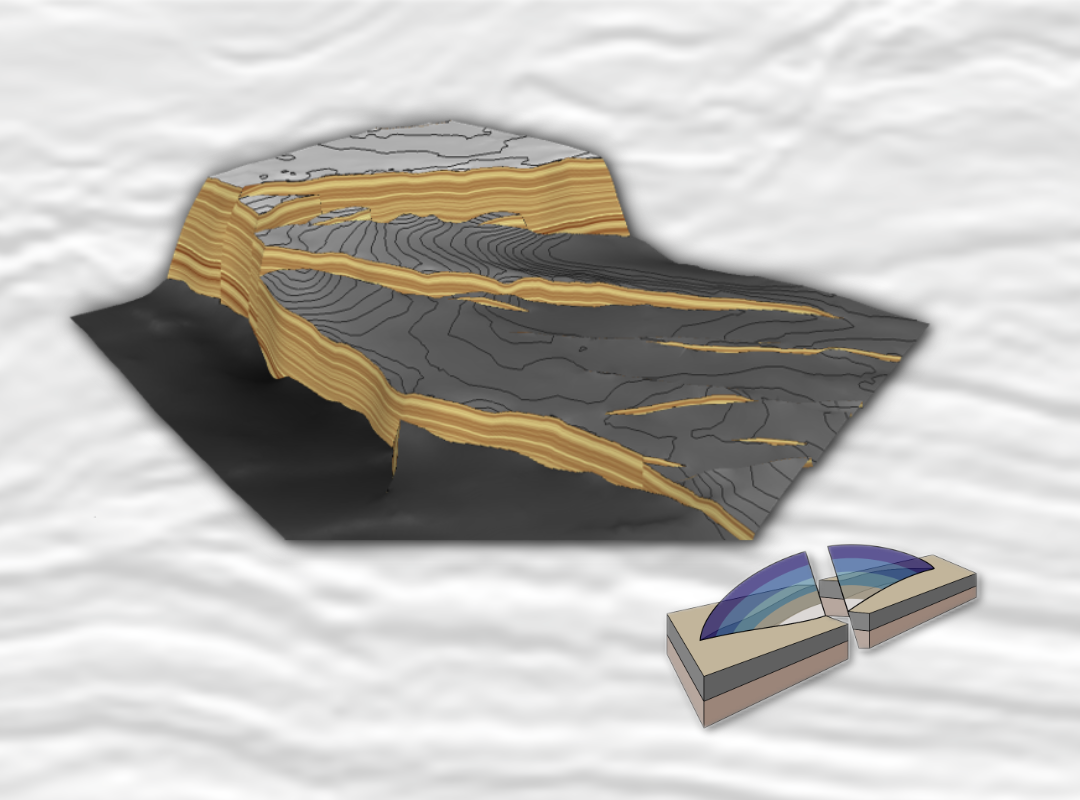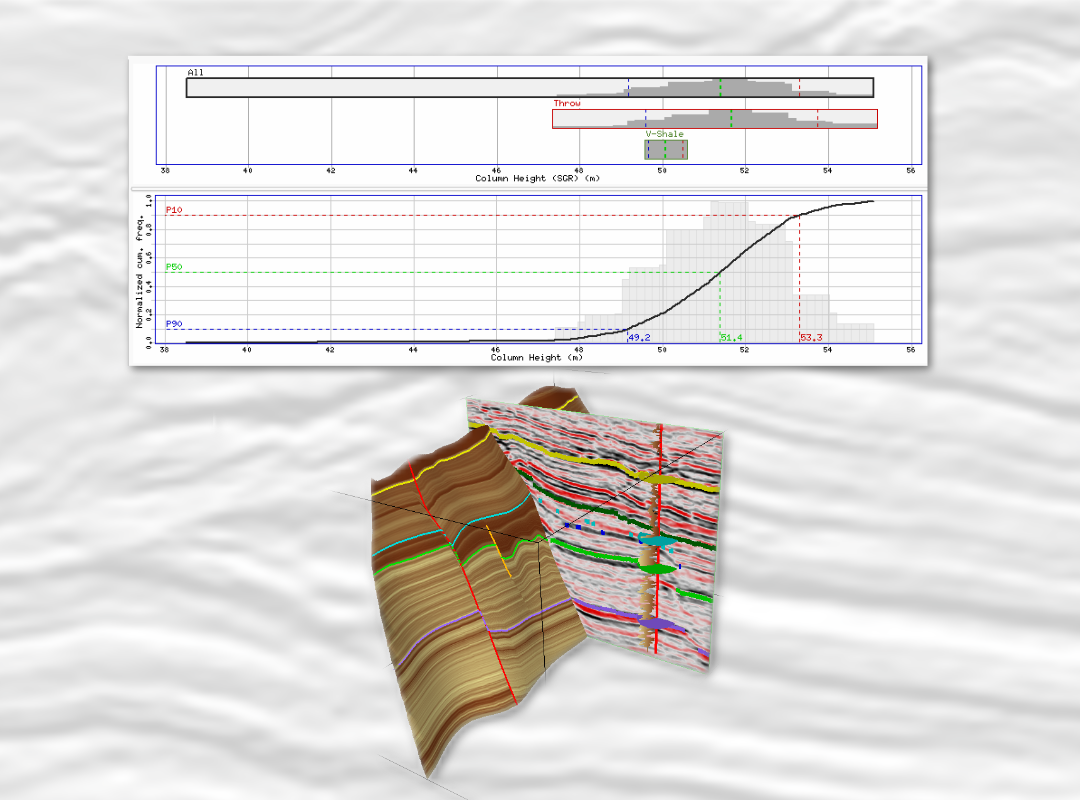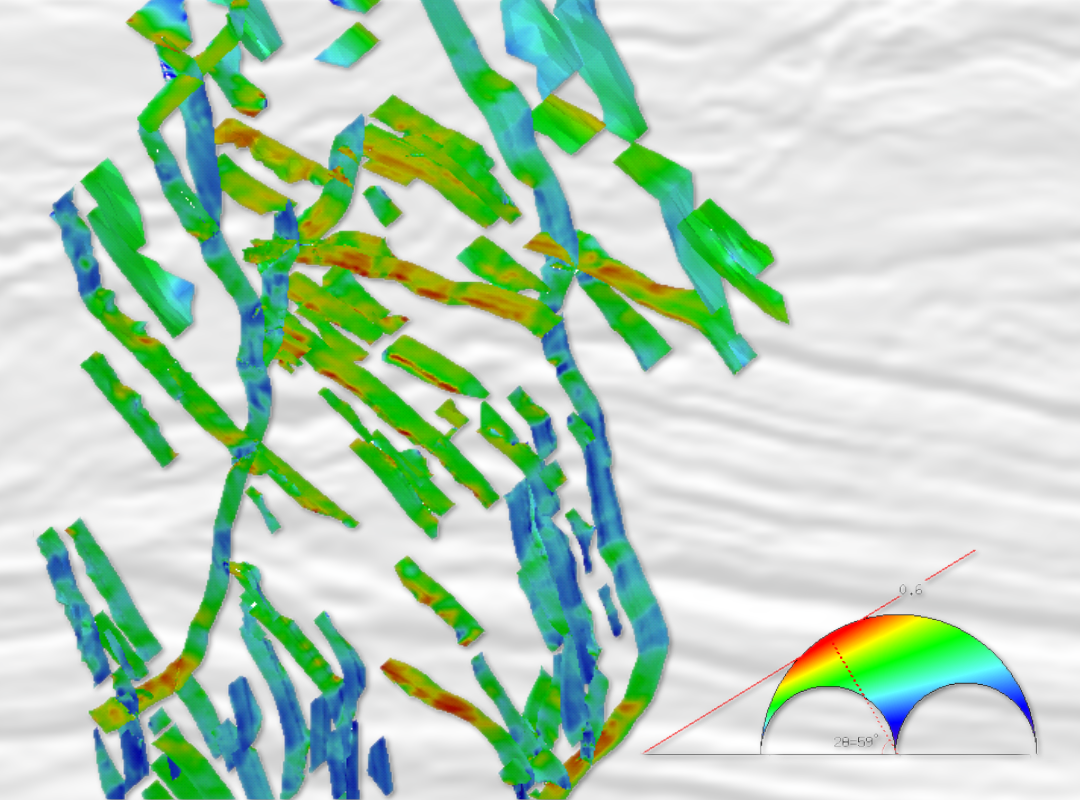Precision Software & Services for the Energy Industry
T7 SEAL
For decades, Badleys has set the benchmark in fault seal analysis, with the Shale Gouge Ratio method widely adopted as the industry standard. SEAL builds on this legacy, offering a comprehensive suite of tools—from the simplicity of Triangle to the advanced capabilities of TrapAnalyst—for assessing up-dip and across-fault leakage. With the introduction of Fault Seal Uncertainty, SEAL is once again driving innovation and excellence within the industry. Combined with powerful GRID integration, SEAL delivers unmatched accuracy and insight at every stage of the exploration and production process, making it the most complete fault seal software available.
Detailed Fault Seal Risking
Once a validated 3D framework model is built in T7 CORE, SEAL enables rapid, in-depth fault seal risking at a geologically appropriate level of precision. No other software offers the same depth and detail in fault seal analysis. A typical workflow might start with a juxtaposition analysis using Allan diagrams to highlight sand-sand contacts, followed by calculation of attributes like Shale Gouge Ratio (SGR) to assess fault seal potential. Results can be used to estimate hydrocarbon column height or contact depth, leveraging T7’s embedded global dataset or your own custom transformation macros. All attributes can be calculated, visualized, and analysed in 3D using company-specific data, providing powerful insights into prospect risk.

Fault Seal Uncertainty
The Fault Seal Uncertainty module is the newest innovation in T7, enhancing the industry-leading fault seal analysis workflow. It allows users to define ranges for key inputs—such as throw and Vshale—to generate distributions of fault seal attributes. This makes it easy to identify the primary factors influencing fault seal performance, enabling more quantitative, data-driven prospect risking. Uniquely, the tool preserves full structural consistency across all input variations, setting a new industry standard for reliable, high-precision fault seal uncertainty analysis.

Geomechanical Insights with SEAL
Faults can transmit fluids not only across their planes but also up-dip if reactivation occurs post-charge—potentially aiding migration or compromising a trap. Since 2001, Badleys has pioneered in-situ stress analysis, with tools refined through years of calibration across industry and academia. SEAL enables users to input stress parameters, apply summary or interval-based pore-fluid pressure profiles, and instantly generate geomechanical plots. Stress attributes can then be visualised on faults within the 3D volume, making it easy to identify areas at risk and better understand fault behavior in your subsurface models.





